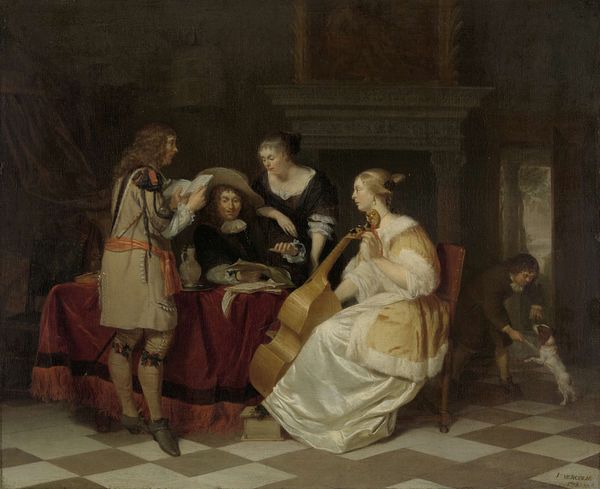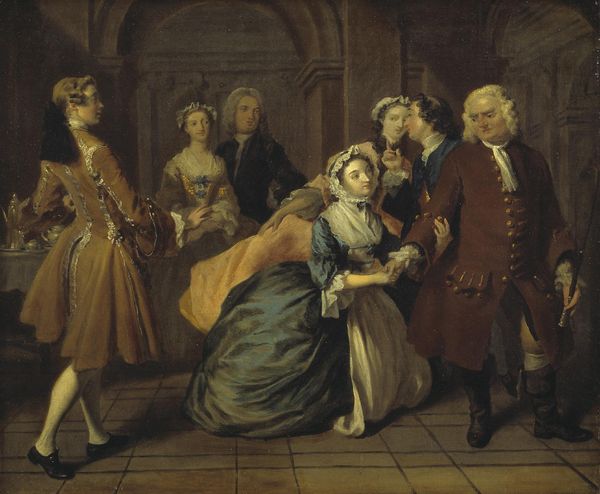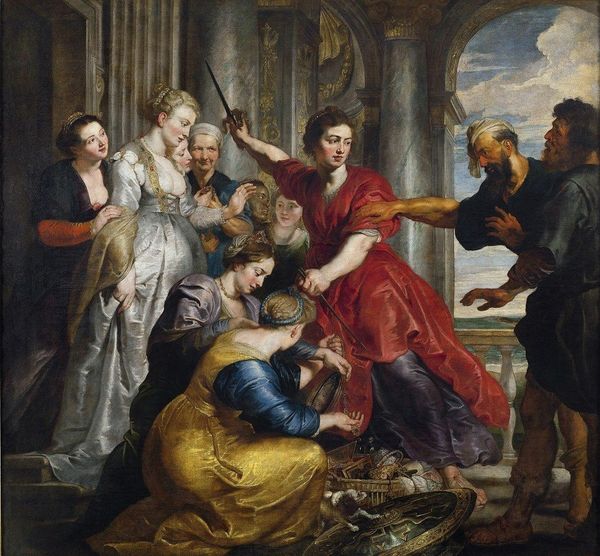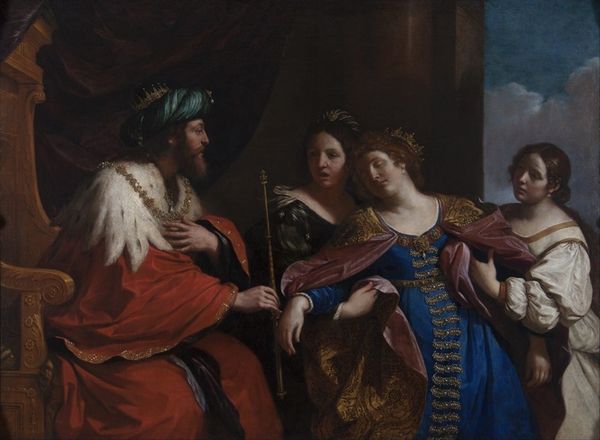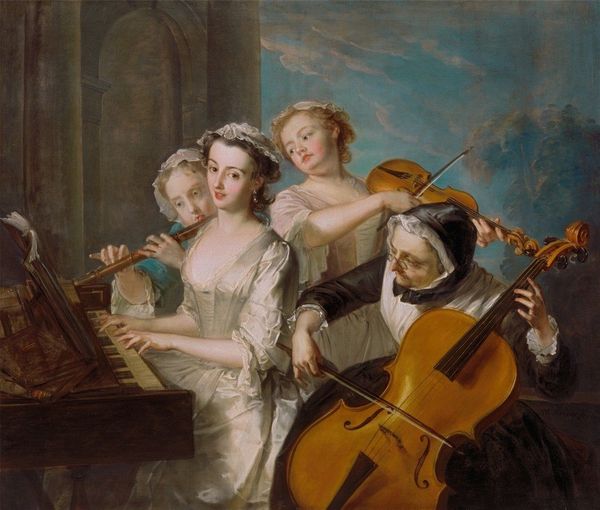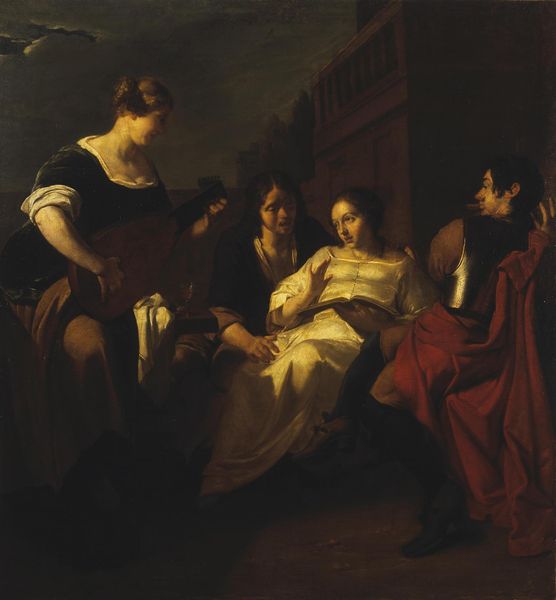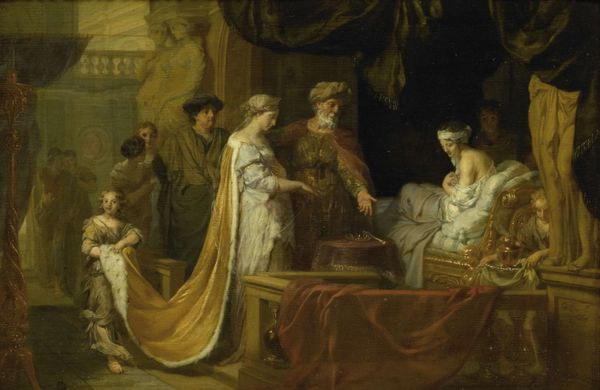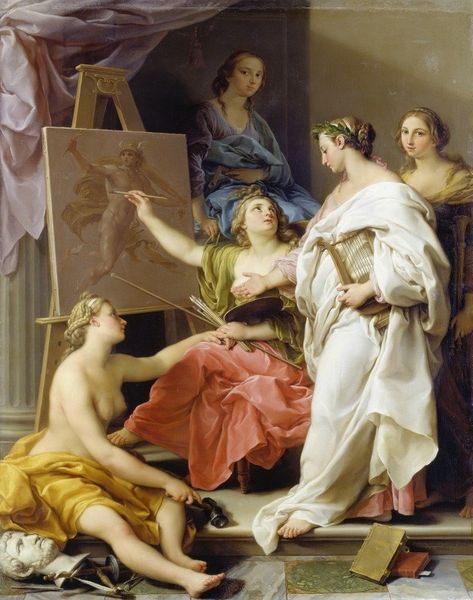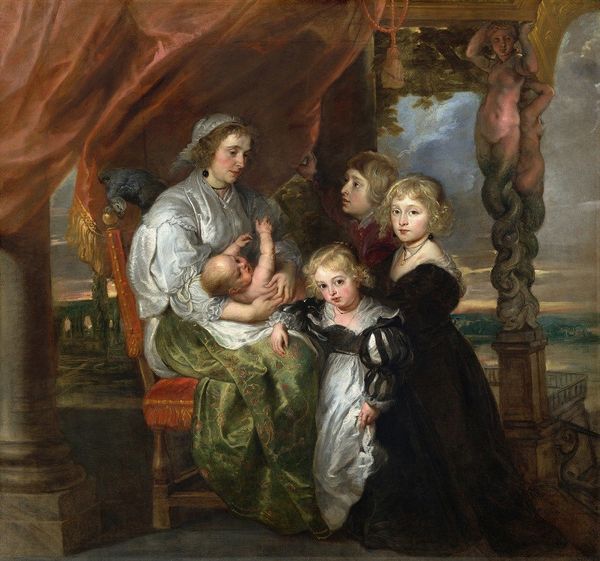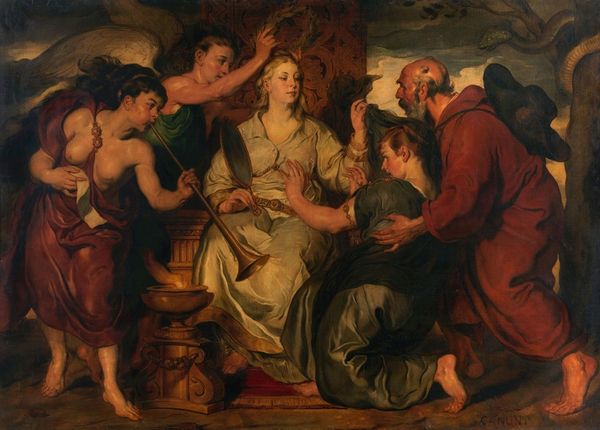
Dimensions: support: 1026 x 1270 mm
Copyright: CC-BY-NC-ND 4.0 DEED, Photo: Tate
Curator: Here we have Philip Mercier's "A Music Party," currently residing in the Tate Collections. Mercier lived from 1689 to 1760. Editor: It strikes me as a very staged scene, even for a painting. The light seems almost theatrical, doesn’t it? Curator: Yes, the positioning and the musical subject create a tableau vivant, a living picture. Music often represents harmony, but also social cohesion and refinement. Editor: I see that. The artist’s choice of muted earth tones contrasted with the bright sky creates a visual balance, pulling the eye across the canvas. Is it meant to evoke an ideal of polite society? Curator: Precisely. Musical gatherings were a hallmark of cultivated life, signifiers of status and taste. The instruments themselves are symbols of this. Editor: It's a fascinating peek into the performative aspects of 18th-century social life, wouldn’t you say? Curator: I concur; it gives us insight into the complex symbols embedded in such a scene.
Comments
Join the conversation
Join millions of artists and users on Artera today and experience the ultimate creative platform.
tate 6 months ago
⋮
After losing his post as painter to Frederick Prince of Wales in 1736, Mercier painted fewer portraits and turned to producing large decorative pictures such as this. Called 'fancies', they depicted musical assemblies, sets of figures emblematic of the senses or the seasons, or sentimental domestic scenes. Mercier's French training brought lightness and elegance to such subjects and prints made after them sold well, bringing the painter a good income. It is not known if this picture was part of a larger set, but its size and low view point suggest that it was meant to hang high, perhaps as an overdoor. Gallery label, August 2004

